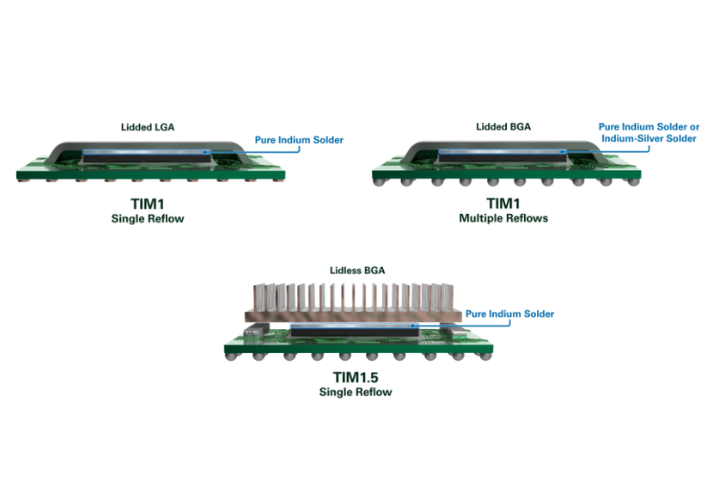Do you ever have a need for a "low temperature" solder (meaning an alloy that melts at less than 175C)?
You may have delicate components that cannot withstand standard reflow temperatures, or maybe you are looking to reduce costs by lowering the reflow temperature, or you may be step soldering. Whatever your reason, there aretwo unique metals that are used extensively in low temperature solder alloys.
The first one I am sure you can guess: Indium. The other one is Bismuth.Whilethese two elements are used extensively inthe over 100 alloys availablein the 50C to 175C range, they couldn't be more different from each other.
Indium is a very soft, malleable metal and remains so even at cryogenic temperatures. It melts at 156C. Bismuth, on the other hand, is verybrittle, even at room temperature, and melts at 271C. But both lend themselves very nicely to solder alloys that melt below 175C.
Let's look at the two most common alloys in these families.
The two alloys:
- 52In 48Sn (Indalloy #1E) Melts at 118C
- 58Bi 42Sn (Indalloy #281) Melts at 138C
What they have in common are:
- Both are lead-free
- Both are tin-based
- Both are eutectic (liquidus and solidus temperatures are the same, with no plastic range)
- Both can be made into a wide variety of solder forms and can beused in low temperature applications
But the indium-based alloy will give you better compensation of coefficient of thermal expansion(CTE) mismatch than the bismuth alloy. The bismuth alloy has greater tensile strength but has a lower shear strength than the indium alloy and is generally not recommended in applications where the product has potential to be dropped (like cell phones).The indium alloy will give you greater thermal conductivity than the bismuth, as well. The bismuth will give you a cost advantage.
So, which alloy do you use? Well, that depends on the metallizations you are working with and the environment in which your final product will be operating.For example,if you are soldering to two different surfaces that expand at different rates, then you will want to go with the indium alloy – to keep your solder jointsfrom cracking. But, there are a lot more considerations when choosing a low temperature solder, and we can help you sort through them. Check out our Low Temperature Solder page on the web or contact us at [email protected]and we can answer your questions or putyou in touch with one of our local experts to review your entire process for the best solution.



